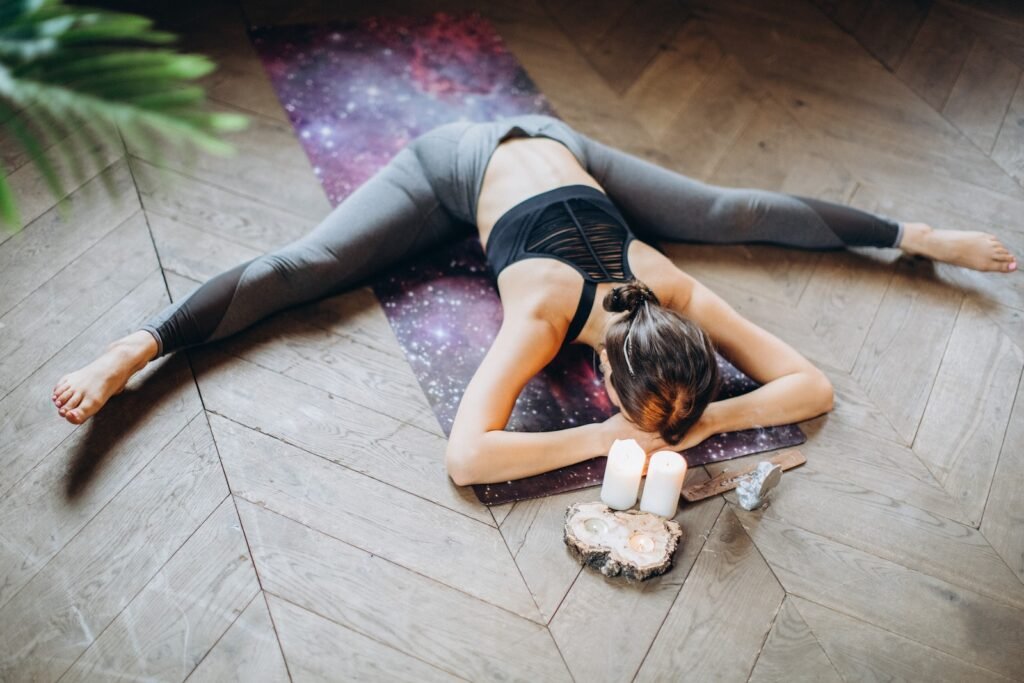Yoga and Fragrance: How to Choose and Use Scent for a More Balanced Practice
In yogic practice, aromatherapy is an excellent way to create a more balanced and serene atmosphere. The use of fragrant essential oils can help to reduce stress, lift moods, and bring physical and spiritual balance in your yoga practice. Understanding how to choose and use scents for yoga can create an even more meaningful yoga experience.

What is Aromatherapy?
Aromatherapy, or “aromacology”, is any form of practice that uses fragrant essential oils. It is based on the understanding that certain essential oils can provide physical and mental health benefits, with the power to both stimulate and relax the body, mind, and soul. The scent of essential oils enters the brain through the olfactory nerve and is processed by an area in the brain closely linked with emotion.
When it comes to a yoga practice, aromatherapy uses the power of smell to create a positive atmosphere and induce relaxation. Scents can help create an atmosphere of peace and communion between the body, mind, and spirit.
Scents can help create an atmosphere of peace and communion between the body, mind, and spirit.
Benefits of Fragrance and Yoga
Essential oils have a variety of benefits when it comes to yoga practice. Fragrances can provide physical and emotional benefits and can promote spiritual wellbeing. Yoga practitioners can enjoy the following benefits:
• Reduced Stress: Fragrances can help to reduce stress and create an overall feeling of relaxation. Oils such as lavender and chamomile can be calming and can help to promote relaxation of the mind and body.
• Improved Moods: Fragrances can lift moods and induce a sense of wellbeing. This is especially beneficial in challenging postures such as forward folds and backbends where emotional distress can make it difficult to find the full benefits of the postures.
• Spiritual Connection: Fragrance can also be used to deepen a spiritual connection with yourself and the divine. Oils such as sandalwood and frankincense can be used to invoke feelings of deep spiritual peace and mindfulness.
Choosing the Right Scent
When choosing a scent for your yoga practice, it’s important to select one that resonates with your individual needs and intentions. If you’re looking to relax, select a more calming scent such as lavender, chamomile, or jasmine. If you’re looking for an energizing and invigorating scent, then choose something like peppermint or eucalyptus. Consider your individual preference when choosing scents and choose one that resonates with your particular needs.
When choosing a scent for your yoga practice, it’s important to select one that resonates with your individual needs and intentions.
When it comes to choosing the right essential oil, select one that is pure, organic, and therapeutic-grade. Avoid anything labeled as “perfume oil” or “fragrance oil”, as these will not have therapeutic properties. Essential oils need to be purchased from a reputable source and stored correctly for maximum results.
When it comes to choosing the right essential oil, select one that is pure, organic, and therapeutic-grade.
Using the Right Technique
When using essential oils for a yoga practice, it’s important to be aware of the appropriate techniques. Essential oils may be applied to the skin and clothing directly or diluted with a carrier oil such as avocado, coconut, or jojoba oil. When applying oils directly to the skin, a patch test should be conducted first to make sure that the oil will not cause any skin irritation.
For a yoga practice, it’s always best to use an essential oil diffuser to help disperse the oils and create a pleasant fragrance throughout the room. When using a diffuser, be mindful of the length of time the scent is being dispersed. Too much essential oil can cause headaches, so be sure to follow the recommended amount as stated on the product label.
Too much essential oil can cause headaches, so be sure to follow the recommended amount as stated on the product label.
Finally, when using essential oils in a yoga practice, it’s important to honor the intention behind the practice. Essential oils are not a magical cure-all, but they can be an effective way to support a more balanced and mindful practice. Diffusing oils promises an easy, efficient and stress-free experience.
Conclusion
Using essential oils in a yoga practice is a great way to create a more balanced and intentional experience. Essential oils offer physical, mental, and spiritual benefits, but it’s important to be mindful of the appropriate techniques to be used. Understanding how to choose and use the right aroma for an individual practice is key to unlocking the benefits of fragrant essential oils in yoga.

